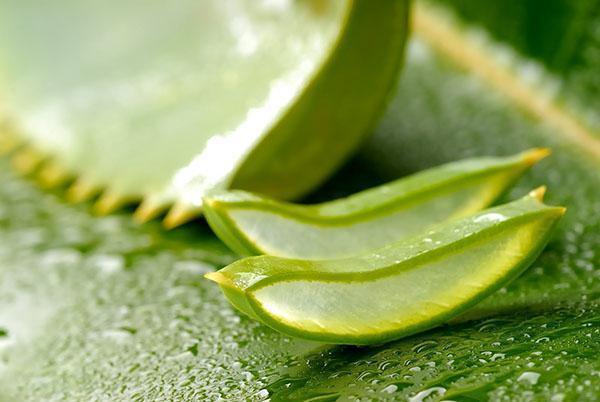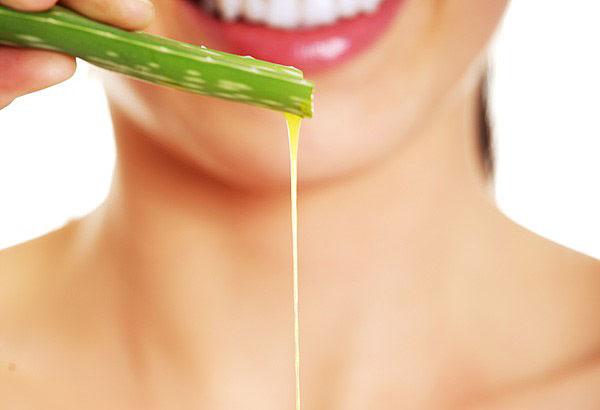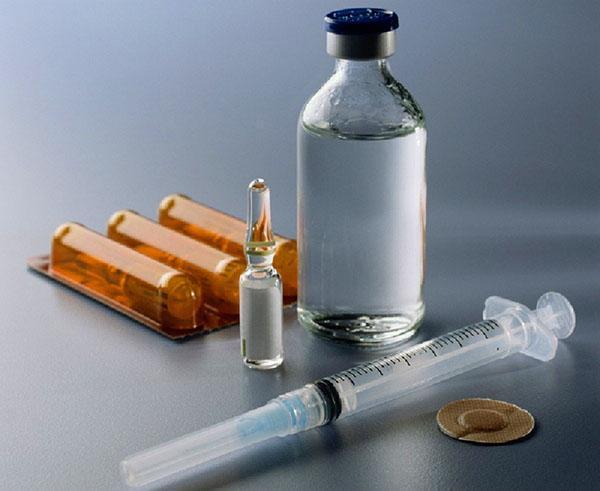Instructions for the use of aloe in ampoules
 Due to the complex biochemical composition and ambiguous effect, preparations based on plant raw materials intended for subcutaneous and intramuscular injections are very rare. The exception, uniquely recognized by both folk and traditional medicine, is aloe in ampoules, the instructions for use of which fully confirm the effectiveness of the natural remedy.
Due to the complex biochemical composition and ambiguous effect, preparations based on plant raw materials intended for subcutaneous and intramuscular injections are very rare. The exception, uniquely recognized by both folk and traditional medicine, is aloe in ampoules, the instructions for use of which fully confirm the effectiveness of the natural remedy.
The healing power of aloe has been known for thousands of years. First, folk, and then official medicine began to use the juice and pulp of the leaves of this plant as an anti-inflammatory, wound-healing, antibacterial and emollient.

Features and benefits of aloe for injection
 Aloe is a natural storehouse of vitamins, essential oils, mineral salts and organic acids. Means in ampoules based on juice from plant leaves:
Aloe is a natural storehouse of vitamins, essential oils, mineral salts and organic acids. Means in ampoules based on juice from plant leaves:
- retains all the properties of "live" juice;
- when stored properly, it does not lose its healing power for a long time;
- easy to use as it is suitable for both aloe injection and external use.
The high activity of the herbal preparation arouses justified interest in it among specialists in various fields of medicine.
Pulmonologists and ophthalmologists, physicians dealing with the treatment of neurological diseases, and urologists have experience in using the extract today. The most successful work with aloe extract in ampoules is dermatologists who help get rid of skin ailments, and cosmetologists. The natural remedy is used as part of therapy for dysfunctions of the digestive system and gastric bladder, during rehabilitation after surgical interventions, diseases. Aloe helps to regenerate the skin after serious skin injuries and after burns.
How does the instruction for use of aloe in ampoules determine the scope of its use?
Indications for the use of aloe extract in ampoules
 Official medicine aloe juice in ampoules is recommended for a number of problems of an ophthalmic, neurological, gastroenterological and pulmonological nature.
Official medicine aloe juice in ampoules is recommended for a number of problems of an ophthalmic, neurological, gastroenterological and pulmonological nature.
In ophthalmology, aloe in ampoules is included in complex therapy not only for inflammatory processes of various nature, but also:
- with rapidly developing myopia;
- with clouding of the lens;
- with atrophy of the optic nerve and other serious problems that threaten the loss of vision.
Instructions for the use of aloe in ampoules indicates the advisability of using this agent for the treatment of the initial stages of tuberculosis, bronchial asthma and pneumonia.
Purified aloe vera extract is a proven appetite simulator, but it doesn't stop there. Gastroenterologists include juice in complex therapy in the treatment of gastritis with low acidity, gastroduodenitis, enterocolitis and cholecystitis.
 Since doctors see many contraindications, aloe injections are used very carefully in gynecology, but at the same time they have proven their effectiveness in treating infertility not only in women, but also in men.
Since doctors see many contraindications, aloe injections are used very carefully in gynecology, but at the same time they have proven their effectiveness in treating infertility not only in women, but also in men.
The stimulating, strengthening and immune properties of aloe are a good reason for the interest in the remedy on the part of neurologists. Aloe preparation in ampoules is applicable in rehabilitation after strokes, during the therapy of neuritis, neuralgia and radiculitis.
Outwardly, according to the instructions for use, aloe in ampoules is used to stimulate the healing of wounds, abrasions, burns and ulcers. The beneficial properties of the drug are actively exploited in cosmetology and dermatology, for example, in the treatment of acne, inflammatory processes, as well as for intensive care.
 In masks, creams, lotions and facial wipes, aloe in ampoules is used as a means of:
In masks, creams, lotions and facial wipes, aloe in ampoules is used as a means of:
- to deliver moisture to the tissue;
- to relieve irritation and soften the skin;
- to activate regeneration and maintain youth.
Purified aloe juice can be used for massage, included in ointments, and used for lotions.
Method of application and dosage of aloe extract in ampoules
According to the instructions for use, aloe injections are administered subcutaneously. The duration of the course of treatment is 30-50 days. Injections are given once a day, and the dosage is prescribed depending on the disease and the patient's age. The maximum amount of aloe extract that enters the body should not exceed 3-4 ml.
 Before starting aloe injections, a test is carried out. To do this, a small amount of the product is injected under the skin of the forearm. If no negative reaction of the body is detected, the main treatment is started. And after completing the course, they must take a break for 60–90 days. To eliminate possible risks, aloe injections are carried out in a medical facility and under the supervision of a specialist.
Before starting aloe injections, a test is carried out. To do this, a small amount of the product is injected under the skin of the forearm. If no negative reaction of the body is detected, the main treatment is started. And after completing the course, they must take a break for 60–90 days. To eliminate possible risks, aloe injections are carried out in a medical facility and under the supervision of a specialist.
Intramuscularly, liquid aloe extract for injection is not used. And since the injections are quite painful, pain relievers are prescribed along with aloe.
For rhinitis, accompanied by nasal congestion and difficulty breathing, aloe is used for instillation. The drug relieves swelling of the mucous membrane, fights against other bacterial pathogenic flora.
The price of aloe in ampoules is comparable to the known remedies for the common cold. The effect of a natural herbal remedy is much broader. It not only makes breathing easier, but also activates the immune defense, disinfects and dries inflamed tissues.
Contraindications to the use of aloe for injection
The effectiveness of aloe for injection and external use needs no proof. It is a proven and popular herbal preparation for a long time. But the high concentration of bioactive substances in the juice or extract is not only a positive side, but also a reason to think about the existing side effects.
Although in the course of scientific research of aloe extract in ampoules, there was no negative effect of the drug in case of an overdose, but there is a whole category of diseases in which injections with aloe are inevitably harmful to health.
 First of all, it is strictly forbidden to give injections to children under one year of age, pregnant and lactating women. With colds in children, without the recommendation of a doctor, you should not use aloe even to treat a cold, since self-medication is fraught with drying out of the mucous membrane and exacerbation of the disease.
First of all, it is strictly forbidden to give injections to children under one year of age, pregnant and lactating women. With colds in children, without the recommendation of a doctor, you should not use aloe even to treat a cold, since self-medication is fraught with drying out of the mucous membrane and exacerbation of the disease.
A contraindication to the use of aloe in ampoules according to the instructions is renal and heart failure of a chronic form, arterial hypertension, hemorrhoids, cystitis and other inflammatory diseases of the pelvic organs, exacerbations and acute forms of ailments of the digestive system.
A remedy based on aloe extract is contraindicated for internal bleeding, as well as for tuberculosis complicated by hemoptysis.
Instructions for using aloe for injections also warn of a number of possible side effects. Among them:
- allergic reaction to the components of the drug:
- temperature increase;
- indigestion in the form of diarrhea;
- increase in pressure.
Long-term course use of aloe in ampoules can lead to the leaching of potassium from the body. This effect is enhanced if the patient is taking diuretics. Against the background of aloe injections, laxatives, drugs for the treatment of arrhythmias and aimed at stimulating hematopoiesis are more intense.